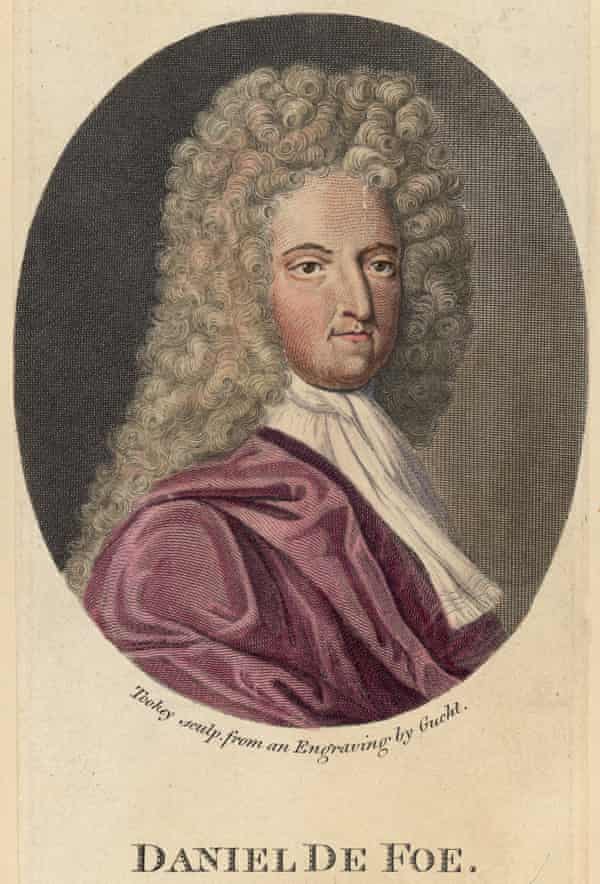2020 / BOOKS OF THE YEAR
A Journal of the Plague Year by Daniel Defoe
This 1722 ‘portrait of the face of London now indeed strangely altered’ offers a fascinating perspective on our current crisis
T

The first thing to say about A Journal of the Plague Year is that it is not, strictly speaking, a first-hand record. It was published in 1722, more than 50 years after the events it describes. When the plague was ravaging London, Defoe was around five years old. Defoe claimed that the book was a genuine contemporary account – its title page states that the book consists of: “Observations or Memorials of the most remarkable occurrences, as well public as private, which happened in London during the last great visitation in 1665. Written by a CITIZEN who continued all the while in London. Never made publick before” and credited the book to HF, understood to be his uncle Henry Foe. But that shouldn’t be taken too seriously: Defoe also claimed that Robinson Crusoe was written by a man who really lived on a desert island for 28 years, and that his book about the celebrated thief Moll Flanders was written “from her own memorandums”. He even put that claim in the latter’s title, which is worth recounting in full: The Fortunes and Misfortunes of the Famous Moll Flanders, Etc. Who was born in Newgate, and during a life of continu’d Variety for Threescore Years, besides her Childhood, was Twelve Year a Whore, five times a Wife (whereof once to her own brother), Twelve Year a Thief, Eight Year a Transported Felon in Virginia, at last grew Rich, liv’d Honest and died a Penitent. Written from her own Memorandums.)
This is not to deny A Journal of the Plague Year’s literary or historical significance. It’s possible that it was at least based on Defoe’s uncle’s journals. It is certain that Defoe himself did a lot of research into his subject, and used his considerable talents to bring it to life. It’s full of vivid descriptions of the way the plague moved through the different neighbourhoods of London, the precautions taken to fight it, and the chilling progress of the carts loaded with corpses accompanied by cries of “bring out your dead”. There are also remarkable insights into human behaviour under the shadow of a pandemic, not to mention instances of misbehaviour and madness, such as that demonstrated by a character called Solomon Eagle who took to parading about the streets off the Fleet, denouncing the sins of the city “sometimes quite naked, and with a Pan of burning Charcoal on his Head”.

Defoe himself will also be an intriguing subject for us. As well as writing more than 300 books and tracts (some put the figure as high as 545) under almost 200 different pen names, he travelled widely, once ran a tile and brick factory, found time to take part in the disastrous Monmouth rebellion attempting to overthrow James II, and to make and lose several fortunes. At one time, he owned a ship and country estate; at others, he was held in debtors’ prisons. He also went to jail for pretending to argue in his 1702 satire The Shortest Way with Dissenters that the best way of dealing with religious rebels was to banish them abroad and send their preachers to the hangman. So many people failed to see the joke that the House of Commons had the book burned, put the author in Newgate prison, and then sent him to the pillory for three days. Defoe was also marched to a different set of stocks each day but, instead of rotten fruit, the crowds threw flowers at him while his friends used the opportunity to flog more of his pamphlets.
All that was before he really got going. His most famous book, Robinson Crusoe, came out in 1719 and A Journal of the Plague year followed in 1722. In his productive last years, he also wrote a huge travel book about Great Britain, the aforementioned Moll Flanders and more than a dozen other novels. Many of them were hits but at the time of his death in 1731, he was likely in hiding from creditors. Some life.
A Journal of the Plague Year is available for free on Project Gutenberg. If you’re lucky enough still to be able to buy it from a bookseller, there are some really good editions available. My Penguin edition even has an introduction by the great Anthony Burgess, a fine recommendation for Defoe’s work in and of itself. I’m looking forward to finding out more – and hope you’ll join me.





No comments:
Post a Comment